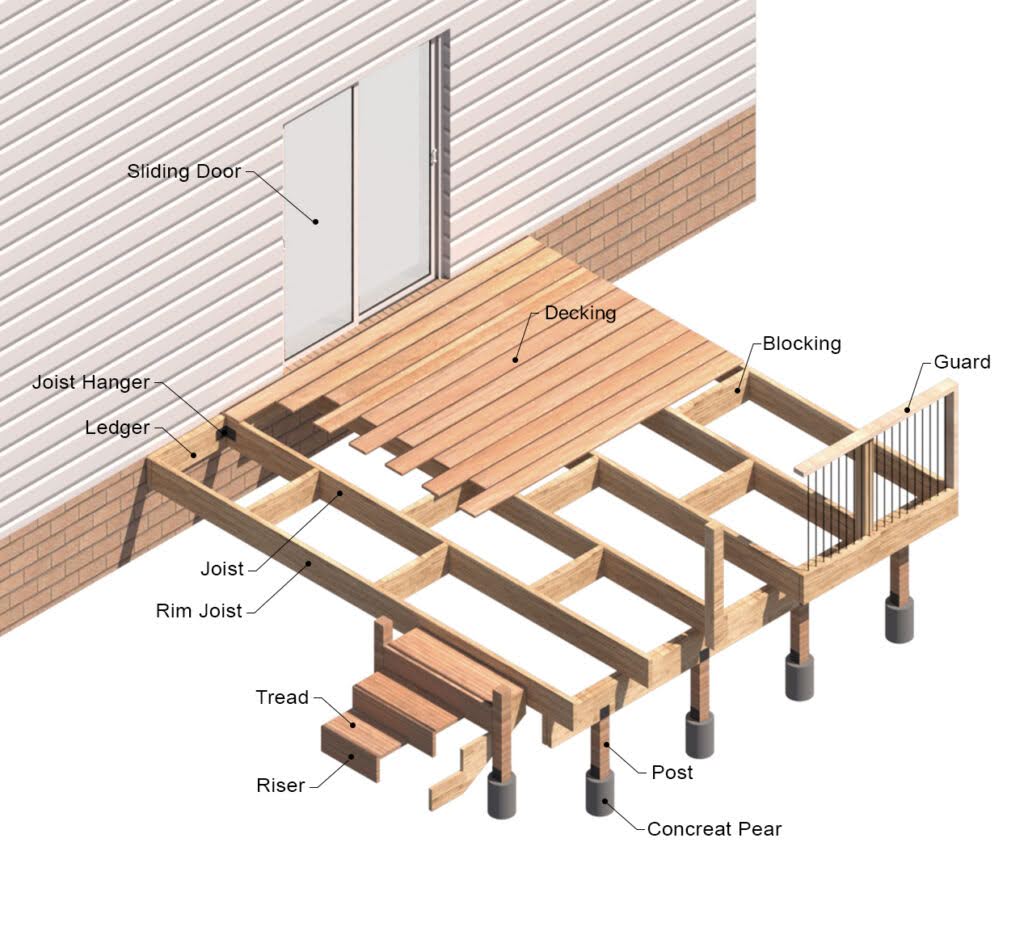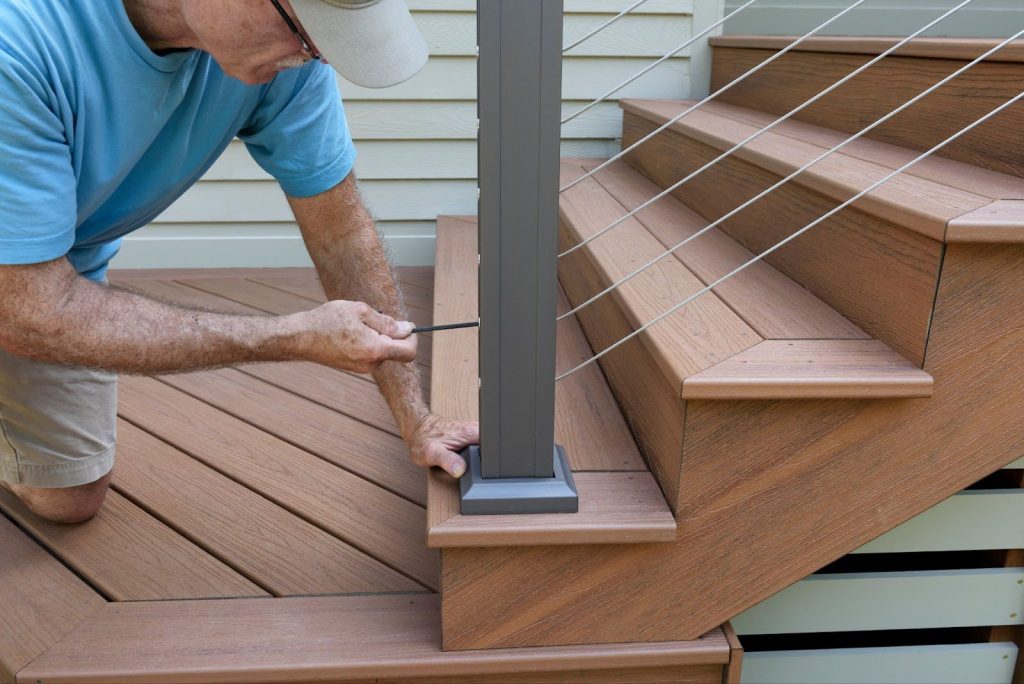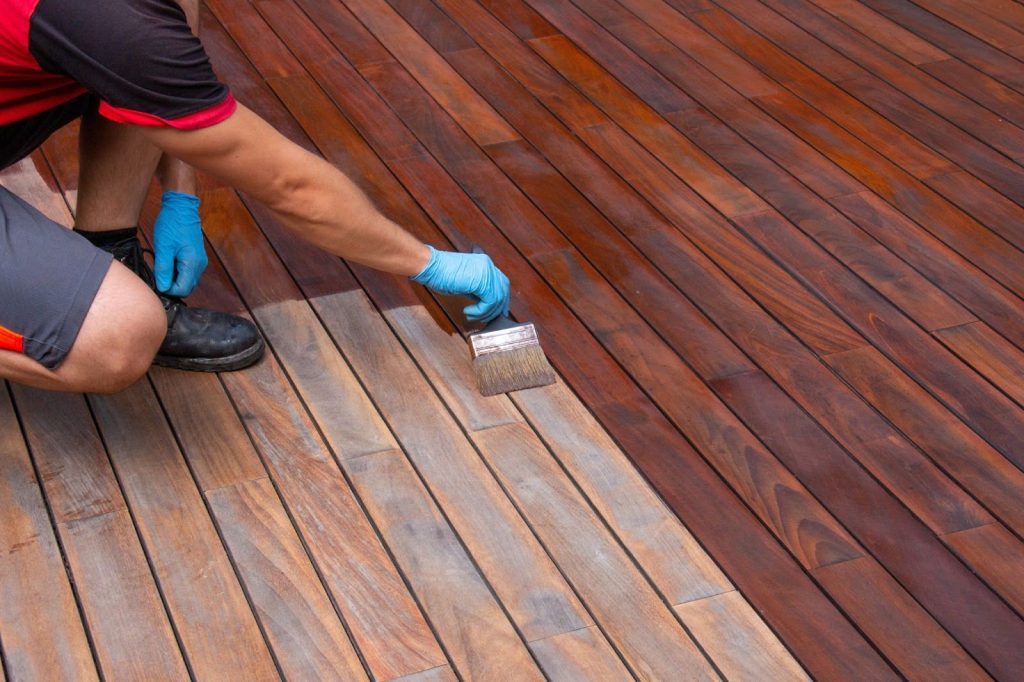Building a deck is a popular home improvement project that can transform your outdoor living space, creating an ideal area for relaxation and entertainment. As you envision your perfect deck, complete with comfortable seating and perhaps a grill or fire pit, it’s easy to get caught up in the excitement of design and planning.
However, before you start selecting materials or sketching layouts, there’s a crucial aspect that many homeowners overlook – building permits. The topic of permits might not be so thrilling, but it’s a vital step in the process.
So, do you need a permit to build a deck? Understanding the requirements for deck construction in your area can save you time, money, and potential legal issues down the road.
In this article, we’ll explore the world of deck building permits, shedding light on a process that often seems shrouded in mystery and bureaucracy. So, let’s begin this exploration to demystify the process of permits for building a deck.

Do You Need a Permit to Build a Deck?
Whether you need a permit to build a deck depends on local building codes and regulations. Many municipalities require a permit for deck construction, especially if the deck is elevated, attached to the house, or exceeds a certain size.
Check local building codes
Your first step is to check your local building codes. These rules vary from place to place, so it’s crucial to understand what applies to your area. Start by contacting your local building department or city office. You can visit in person or call them. Ask about deck permits, size limits, and safety rules.
They can give you specific information for your project. Another way to learn about local rules is to look online. Visit your city or county’s official website. Look for sections about building or permits. Many sites have guides about deck construction. Some even let you apply for permits online.
Consult with professionals
Talking to professionals can be very helpful. Local deck builders often know a lot about permit requirements. They work with these rules all the time. Ask them about their experience with local authorities. Some contractors even help with permit applications.
For more complex projects, you might need an architect or engineer. An architect can draw up plans that meet all the rules. They might spot problems early, saving you time and money. Engineers are important for tricky building sites. They can check the soil and make sure your deck will be strong and safe.
Review HOA guidelines
If you live in a community with a Homeowners Association (HOA), there’s another set of rules to consider. HOAs often have their own rules about how homes should look, including decks. These rules can be stricter than local building codes.
Start by getting a copy of your HOA’s rules. These are usually called covenants, conditions, and restrictions (CC&Rs). Read them carefully, looking for any mentions of decks or outdoor structures. Pay attention to rules about size, materials, and colors.
When a Permit Is Typically Required
When planning to build a deck, it’s important to know when you need a permit. Permits help ensure your deck is safe and follows local rules. Let’s look at the main factors that usually require a permit.
Size and height of the deck
The size and height of your deck often determine if you need a permit. Many places have size limits. For example, decks under 100 or 200 square feet might not need a permit, but bigger decks usually do. Height matters, too.
Decks close to the ground often don’t need permits, but if your deck is high off the ground, you’ll likely need one. Many areas use 30 inches as the cutoff point. Here are some common examples – a small 10×10 foot deck might not need a permit in many places. However, a 12×12 foot deck often does because it’s over 120 square feet.
Structural changes
When you make big changes to how your deck is built, you usually need a permit. This includes adding or changing main support parts like posts, beams, and joists. These are the bones of your deck, so they’re important for safety. Adding new support posts or changing how far apart your joists are typically needs approval.
Adding extra features to your deck often requires a permit too. Stairs are a good example. They have their own safety rules about height and width. Railings are another feature that often needs approval. They’re crucial for preventing falls, especially on high decks.
Electrical and plumbing work
If you want to add lights, outlets, or water to your deck, you’ll almost always need a permit. This is true even for small electrical projects like low-voltage lighting. It’s all about making sure these features are safe outdoors. Water features, sinks, or outdoor kitchens also need permits.
They involve both electrical and plumbing work, which has special outdoor rules. It’s important to know that electrical and plumbing often need their own separate permits. These are different from your deck permit and you might need a licensed professional to do this work.

Location and zoning
Where you can build your deck and how big it can be often depends on your local zoning laws. These laws talk about “setbacks”, which are how far your deck needs to be from property lines. Front yard setbacks are usually bigger than side or back yard ones. If you live in a corner, you might have special rules to follow.
Different types of areas have different deck rules. For example, if you live in a historic district, you might have extra rules about how your deck can look. Some areas prone to fires or floods might have special requirements for deck materials or height.
The Permit Application Process
Getting a permit for your deck is an important step. It helps ensure your deck is safe and follows local rules. Let’s walk through the process of how to get a deck permit step by step.
- Gather required documents
Before you can apply, you’ll need to collect all necessary paperwork. This typically includes detailed plans, site surveys, and other relevant information about your project. You may also need to provide proof of property ownership or a letter of permission from the landlord if you’re renting.
- Submit the application
Once you have all your documents ready, it’s time to submit your application. Many cities now offer online submissions, which can be convenient. If online isn’t an option, you’ll need to visit the building department in person. Bring all your paperwork and be prepared to wait and ask questions.
Processing times and fees can vary. Simple decks might be approved quickly, while complex projects can take longer. Some areas might need extra approvals, so check if you need any additional permissions.
- Inspection process
After your permit is approved, you’ll go through several inspections as you build your deck. The first inspection often happens before you pour concrete for the footings. An inspector will check that you’re following the approved plans.
The final inspection happens when your deck is complete. The inspector checks everything, including railings, stairs, and any electrical or plumbing work. If the inspector finds any problems, they’ll give you a list of things to fix. Make these corrections quickly and schedule a re-inspection.

Conclusion
Building a deck can significantly enhance your home, but navigating the permit process is crucial for ensuring safety and compliance. By understanding local building codes, consulting professionals, and reviewing HOA guidelines, you can determine if your project requires a permit.
So, do you need a permit to build a deck? Factors like deck size, height, structural changes, and additional features often influence permit requirements. The application process involves gathering necessary documents, submitting them correctly, and undergoing inspections throughout construction.
While it may seem complex, obtaining proper permits protects you from potential legal issues and ensures your deck meets all safety and building standards. By following these steps and working closely with authorities, you’ll create a safe, approved deck that you can enjoy for years to come.

